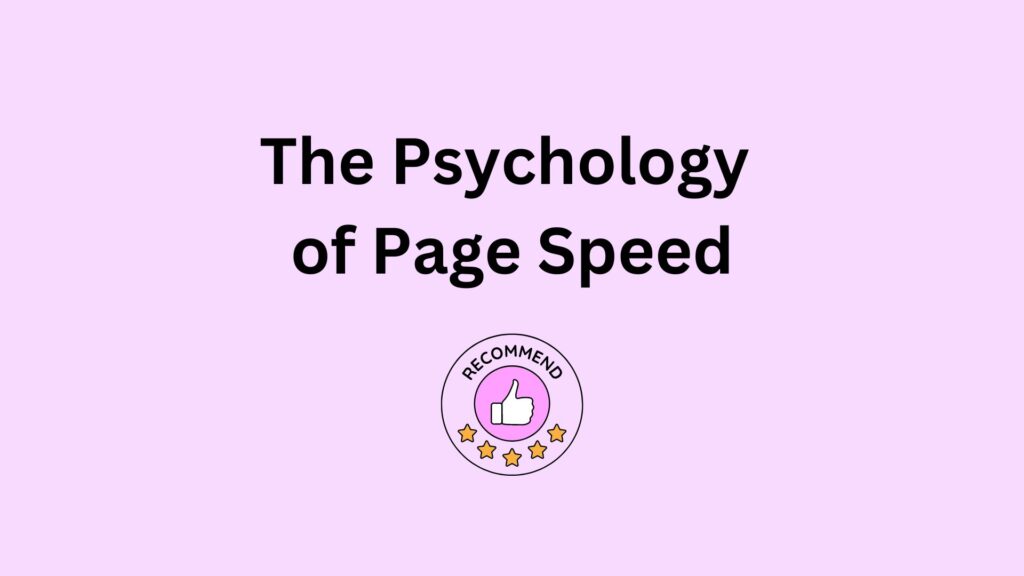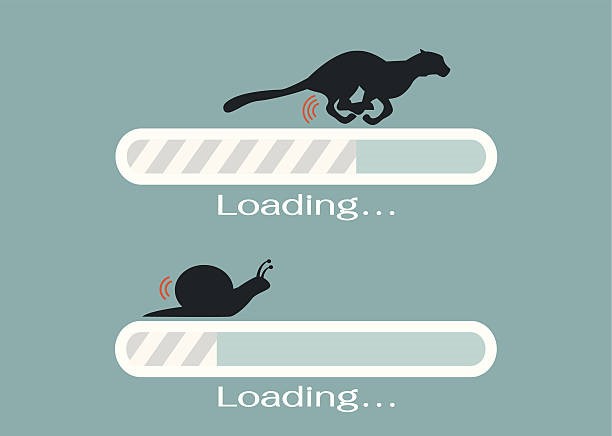The Psychology of Page Speed: Building Trust and Engagement Online

From the moment a user clicks a link or enters a web address, the countdown begins. Every fraction of a second that elapses during the loading process is laden with psychological significance, influencing perceptions of credibility, trustworthiness, and usability. Psychologically, humans are wired to seek instant gratification and immediate rewards, a trait that manifests prominently in the digital realm. When confronted with a slow-loading website, users experience a cognitive dissonance—a misalignment between their expectations of speed and the reality of sluggishness. This dissonance triggers a cascade of negative emotions, including frustration, impatience, and distrust, eroding the foundation of positive user experiences and fostering a sense of dissatisfaction.
In contrast, a fast-loading website elicits a diametrically opposed psychological response—an affirmation of expectations, a validation of competence, and a reinforcement of trust. Rapid page speed engenders a sense of fluidity and seamlessness, instilling confidence in users and empowering them to navigate the digital landscape with ease and efficiency. From a psychological standpoint, speed equates to competence, reliability, and professionalism, eliciting positive affective responses and fostering a virtuous cycle of engagement and satisfaction.

When users encounter a fast website, they are more inclined to respond positively to calls to action prompting them to register, download, subscribe, request information, or make a purchase.
On the contrary, even a minor 2-second delay in webpage loading time can lead to dissatisfaction and reduced engagement. Research indicates that users experiencing such delays tend to perform almost 2% fewer queries, click 3.75% less frequently, and express dissatisfaction with their overall experience. Furthermore, they are likely to share their negative experiences with friends.
Research:
A survey conducted in the UK revealed compelling insights into user sentiments regarding slow website performance:
- 71% of respondents reported feeling inconvenienced by slow websites on a regular basis.
- Over 30% noted an increase in performance-related stress or frustration over time.
- A significant 78% experienced negative emotions due to slow or unreliable websites.
- 44% of users expressed uncertainty about the success of online transactions due to slow processing times.
- A notable portion, 42% of men and 35% of women, indicated that they had decided against using a company again after encountering a slow website.
Usability expert Jakob Nielsen has stated that human responses to poor load times are based on two aspects of how our brains function:
- Our poor short-term memory: Information stored in short-term memory decays quickly.
- Our need to feel in control: Being forced to wait makes us feel powerless and frustrated.
Short-Term Memory:
Human cognition operates within the constraints of short-term memory, a finite resource characterised by its fleeting nature and limited capacity. Information stored in short-term memory undergoes rapid decay, with retention durations ranging from seconds to minutes. Consequently, when users encounter delays in website loading times, the information gleaned from preceding interactions may dissipate before the desired content materialises, leading to cognitive dissonance and frustration.
From a technical standpoint, the processing limitations of short-term memory mirror the finite resources allocated to browser rendering and content delivery. As users await the completion of resource-intensive tasks, such as JavaScript execution or image loading, the cognitive load imposed by the anticipation of information retrieval compounds with each passing moment of delay. The resulting cognitive strain impairs user attention and engagement, hindering task completion and eroding satisfaction with the overall browsing experience.

The Need for Control:
In addition to the constraints of short-term memory, human psychology is characterised by an intrinsic need for control—a desire to exert influence over one’s environment and circumstances. When users are compelled to wait for a website to load, their sense of agency is undermined, leaving them feeling powerless and frustrated. From a psychological standpoint, the imposition of involuntary waiting periods triggers a visceral response, eliciting negative emotions and diminishing perceptions of user autonomy.
From a technical perspective, the perceived loss of control over the browsing experience stems from delays in server response times, network latency, and resource loading inefficiencies. As users navigate the digital landscape, they expect responsiveness and immediacy in their interactions—a seamless flow of information that aligns with their cognitive expectations and behavioural intentions. However, when confronted with sluggish load times, their sense of control is compromised, leading to heightened levels of frustration and disengagement.
According to Nielsen, 0.1 seconds gives us the illusion of instantaneous response, 1 second keeps our flow of thought seamless, and 10 seconds is enough to keep our attention – barely. After 10 seconds, our minds wander, making it harder to get back on task once a page finally loads.
The “Flow” and a Disruption to it:
Robert B. Miller’s seminal study, “Response time in man-computer conversational transactions,” conducted in 1968, stands as a foundational exploration in human-computer interaction (HCI). Miller’s research reinforced the longstanding notion that for effective communication, a response within two seconds of a request is essential. Any delay beyond this threshold disrupts concentration and hampers productivity. Although setting expectations regarding response time frames may alleviate frustration, it does little to mitigate the breakdown in cognitive processes when responses exceed two seconds. Psychologists attribute this need for rapid responses to the concept of “flow.”
In the realm of HCI, flow, as elucidated by Mihaly Csikszentmihalyi in his work “Flow: The psychology of optimal experience,” refers to a state of intense concentration wherein individuals become fully immersed in an activity. Commonly known as “The zone,” flow represents a deeply satisfying experience characterised by absolute absorption in the task at hand. Contrary to leisurely pursuits, flow emerges from engaging in challenging endeavours that demand focused attention.

Whether conducting academic research or selecting accessories for an outfit, the degree of focus retained during the task directly correlates with the pleasurable nature of the experience. When users navigate swiftly through a well-designed website or application with response times under two seconds, their user experience reaches its peak. By accomplishing tasks efficiently and entering a state of flow, users derive satisfaction and enjoyment from their interactions.
Since the rise of computers, we’ve placed new demands on our brains. If our digital experiences are filled with delays, interruptions, and restarts instead of smooth, continuous actions, our brains, which are used to seamless flow, struggle to cope with this stop-and-go interaction. This causes dissatisfaction and frustration on the user’s end, leaving a bad impression for the website.
The Paradox of Choice: Psychological Ramifications of Slow Loading Times
Beyond the realm of affective responses, the psychological ramifications of slow loading times extend to cognitive processes and decision-making behaviours. Research in behavioural economics and consumer psychology has explained the concept of choice overload—the phenomenon wherein an abundance of options overwhelms individuals, leading to decision paralysis and sub-optimal outcomes. In the context of slow-loading websites, choice overload takes on a new dimension, as users are inundated with an excess of waiting time rather than an abundance of choices.
As users wait for a slow website to load, their cognitive resources become depleted, making them less receptive to marketing messages, product offerings, and conversion prompts. This cognitive depletion impairs decision-making processes, reducing the purchase intent and discourage engagement with the digital storefront.
From a psychological perspective, the act of waiting becomes a burden—a cognitive tax imposed on users, draining their mental energy and diminishing their propensity to explore, engage, and transact.

The Positive Feedback Loop of Speed: Accelerating Favourable User Experiences
In the dynamic interplay between page speed and consumer psychology, lies the potential for transformative outcomes—a virtuous cycle of positive user experiences and behavioural responses. By prioritising speed optimisation and delivering swift, responsive digital experiences, ecommerce platforms can cultivate a fertile ground for user engagement, trust-building, and conversion optimisation.
Psychologically, a fast-loading website primes users for positive interactions, setting the stage for meaningful engagement and conversion. As users navigate seamlessly through the digital storefront, their cognitive load is minimised, enabling them to focus their attention on product exploration, decision-making, and transactional activities. With each swift page transition and rapid content delivery, the psychological barriers to engagement are dismantled, paving the way for immersive, frictionless experiences that captivate users and drive them towards desired actions.
Moreover, the psychological impact of speed extends beyond individual interactions to shape broader perceptions of brand identity and reputation. In a digital ecosystem with competitors vying for attention and allegiance, page speed serves as a litmus test of a brand’s commitment to excellence, innovation, and user-centricity. A fast-loading website signals competence, reliability, and customer-centricity, eliciting admiration and loyalty from users who value efficiency and efficacy in their online interactions.

Conclusion:
In the world of online commerce, where pixels and code come together to shape human experiences, page speed emerges as a significant force—a decider of perceptions, emotions, and behaviours. From the psychological imperative of speed to the cognitive ramifications of sluggishness, the interplay between page speed and consumer psychology shows the intricate dynamics of digital interactions.
By understanding and leveraging the psychological underpinnings of page speed, ecommerce platforms can unlock the transformative potential of speed optimisation, cultivating immersive, engaging, and conversion-driven experiences that resonate with users on multiple levels.

In the relentless pursuit of digital excellence, page speed isn’t merely a technical metric—it’s a psychological lever, capable of shaping perceptions, emotions, and behaviours in ways both subtle and profound. As we navigate the ever-evolving landscape of online commerce, let us heed the call to prioritise speed optimisation, harnessing its power to create digital experiences that captivate, inspire, and delight users.






